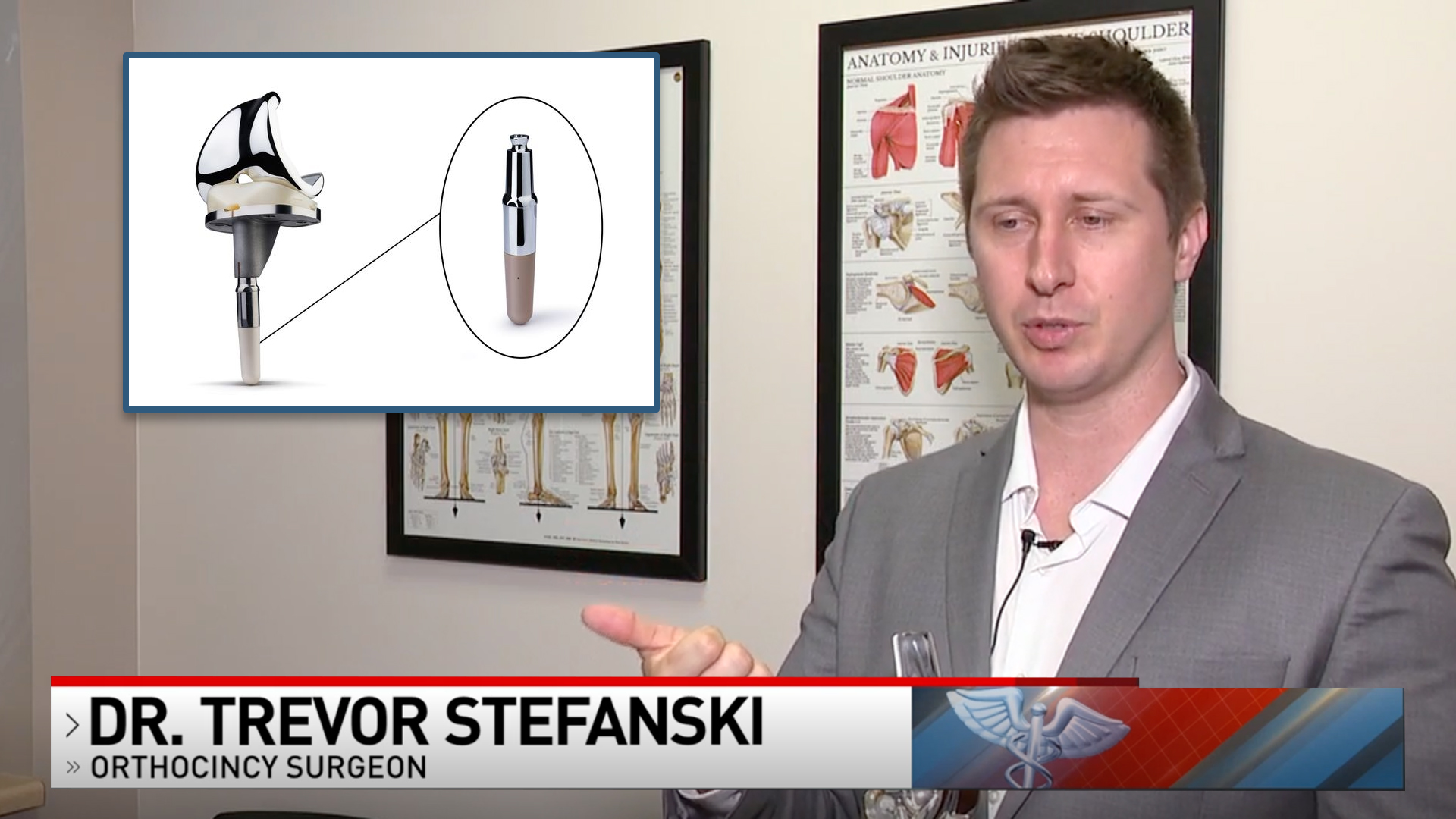by Liz Bonis & Megan Burgasser, WKRC | Click here to read the full story.
CINCINNATI (WKRC) – As more people live longer, researchers are discovering new ways to help keep knees strong. It could keep people pain free with every step.
From what people eat to help fight arthritis to new technology after surgery – there’s a few things to know about knee health.
The first is that people can get knee replacements now in both knees fairly quickly if needed. That’s what Pia Rader did.
“I’m 12 weeks out on the first knee, and seven weeks out on the second knee,” Rader said.
There’s also new technology to let people know how well they are recovering after knee joint replacement surgery.
“They add a little device at the base of the tibial stem,” said Dr. Trevor Stefanski, an OrthoCincy orthopedic surgeon.
The Persona IQ has a small smart stem extension inside it. It captures information and transmits it from the patient to the doctor – to help everyone stay informed about the patient’s recovery.
“We can see step counts, how many steps you are taking in a day, how your walking pattern is, what your pain level is to adjust medication, and that lets us see where we are in terms of recovery,” Dr. Stefanski said.
The third thing to know is if a person is trying to prevent knee problems from osteoarthritis, soup might help – especially if it’s made from broccoli. A small pre-print study found those who ate broccoli soup for 12 weeks saw a 3.17-point reduction on an arthritis index in knee pain, compared to the .61-point increase in the placebo group. More studies are needed to find out why.
The fourth thing to know is for every single pound of weight a person loses – he or she takes four pounds of pressure off the knees at every step.
A physical therapist can help patients build up the muscles around the knees if pain gets in the way of a fitness program for weight loss.
“So, obviously starting off slow. You know, don’t go out and walk a 5K if you haven’t walked all winter long, and kind of working your way into those kind of things, making sure you are doing some stretches, strengthening some of your key muscles – your quads, your glutes. Making sure you are doing some of your basic exercises beforehand can help as well,” said Emily Rolf, an OrthoCincy physical therapist.
People can self-refer if they think they might benefit from time with a physical therapist.








